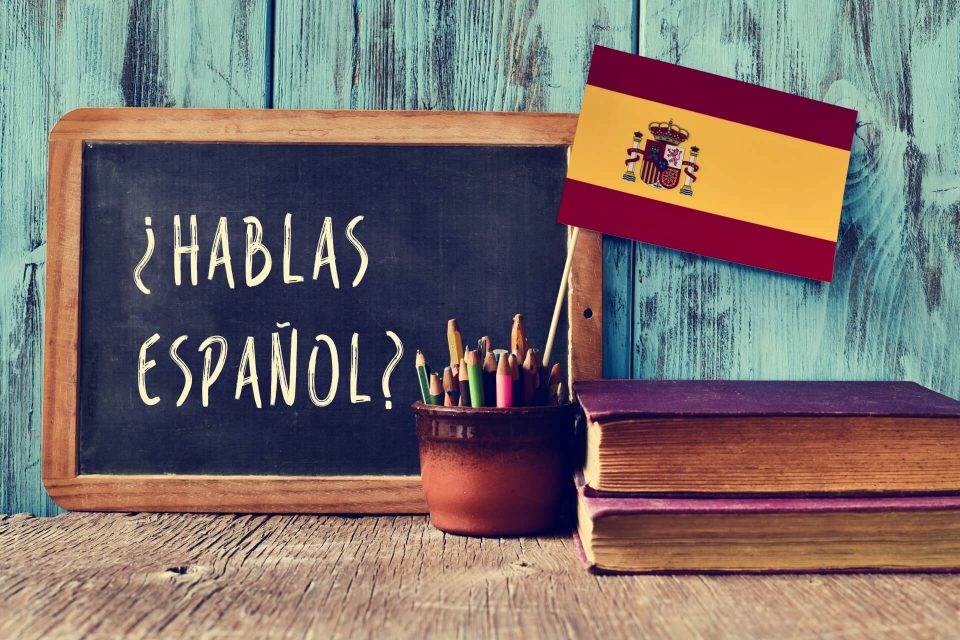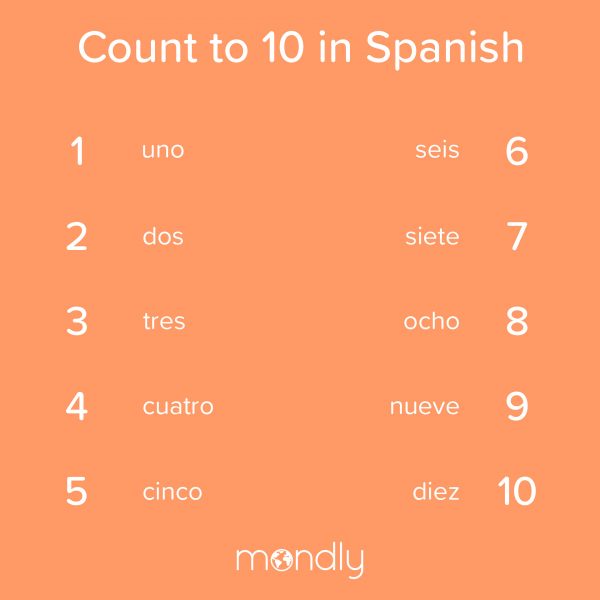Spanish and Portuguese: A Comparative Analysis
Is Portuguese Spanish? This is probably one of the most common language-related misconceptions.
Spanish numbers are not that hard. Uno, dos, tres and voilà: you’re Mr. Worldwide. Really. Just give them a try.

Just like days of the week and greetings, Spanish numbers are essential if you are working on getting that basic Spanish vocabulary of yours in shape. Fortunately, learning how to count in Spanish is much easier than going to the gym because Spanish numbers follow a simple and predictable pattern that doesn’t make every muscle in your body sore. Once you know how to count to 10 in Spanish, counting to 20, 30, 100, and beyond is easy.
Learning how to count is crucial if you decide to learn Spanish. Although we may not always acknowledge it, numbers or números (as you’d call them in Spanish) are essential to our day-to-day lives. From shopping to setting up a meeting, telling time, or giving someone your phone number – they really are one of the most basic and important language lessons. So let’s crack the mystery and discover what comes after uno, dos, and tres. Because Pitbull only gets us so far.
One of my Danish friends discovered how important Spanish numbers actually are when he needed to tell someone the time in Spanish and had no idea that “five” is cinco in Spanish. So this is a great piece of advice: don’t move to Barcelona without knowing one of the most basic Spanish lessons first. Especially when it takes just 10 minutes to master it.
The secret to mastering the Spanish numbers is to learn how to count to 10. “Is that it?” – you’ll say. Well, not entirely. But the first ten numbers are important for two reasons. One: you will probably use them a LOT. And two: they lay the foundations for the next Spanish numbers. Here is the Spanish numbers 1 to 10:

I know what you are thinking. Yeah, there’s also 0 (“zero”) which is cero in Spanish. The pronunciation is a little bit tricky with this one, but if you want to get really good at it, you might wanna try Mondly. Apart from effective, bite-sized lessons and real conversations, Mondly also includes crystal-clear audios recorded by fluent voice artists so you can learn from the best.
Until then, here’s cool audio of a fluent speaker pronouncing the Spanish numbers 1 to 10:
Shopping is great especially when there are sales. But what if you need to ask for the price and the seller says “sólo cuesta veinte euros”? What do you do if you don’t know that veinte is twenty? For a shirt, that may be cheap, but you probably don’t want to pay twenty euros for a rubber duck. Random example, but you got the point: knowing the bigger Spanish numbers can save the valuable contents of your wallet.
Back to numbers, once you get to 20, Spanish numbers are easy to build with what you already know. However, the numbers from 11 to 15 are a bit irregular, so you’ll have to remember them by heart:
11 – once
12 – doce
13 – trece
14 – catorce
15 – quince
Then, from 16 to 19 and even beyond, Spanish numbers are formed following the pattern 10 (diez) + number.
16 – dieciséis
17 – diecisiete
18 – dieciocho
19 – diecinueve
Easy, isn’t it? And from here on, the rule stays the same. Once you know the tens, you’ll easily know how to count up to 100 (cien) in Spanish. Here’s are the Spanish numbers to 40 in a nutshell:

As you can see, up to 30 (“thirty”), the numbers are bound together, but from there on they part ways to make counting in Spanish even easier for you. Basically, you won’t say “thirty-one”, but “thirty and one”: treinta y uno.
As we already settled, counting in Spanish is all about mastering the basics. Now that you know how to count to 40, counting to 100 in Spanish is a piece of cake. Just learn the tens and you are ready to go.
20 – veinte
30 – treinta
40 – cuarenta
50 – cincuenta
60 – sesenta
70 – setenta
80 – ochenta
90 – noventa
Let’s see some more examples to make sure you understood how Spanish numbers work:
Hundreds shouldn’t scare you either. They are just as simple. Once you know how the hundreds are, you’ll also know the numbers in between.
100 – cien
101 – ciento uno
200 – doscientos
300 – trescientos
400 – cuatrocientos
500 – quinientos
600 – seiscientos
700 – setecientos
800 – ochocientos
900 – novecientos
1000 – mil
Notice how 100 is cien, but once you get to 101 and beyond it changes to ciento? Additionally, from 200 onwards, we also add an “s” at the end to make it plural: dosciento, trescientos, and so on. And a little secret: in Spanish, the hundreds can be either masculine or feminine (depending on the noun they accompany). For example, “two hundred books” will be doscientos libros, but to say “two hundred apples” we’ll say doscientas manzanas.
Here are some more examples:

If you want to go even further, thousands and millions work exactly like in English: number + mil (“thousand”) or millón (“million”). Here are some examples:
However, to talk about the population of the world or the bank accounts of some of the richest people in the world, you’ll need even bigger numbers:
And there you have it! These were the Spanish numbers. BOOM! You’re Mr. Worldwide.
Do you want to speak Spanish fluently fast? Get Mondly, the award-winning language learning app that will help you speak Spanish as if you were Spanish-born.
It can be tricky to master Spanish pronunciation if you don’t actively live in Spain or Mexico. But with Mondly you’ll have access to a unique, fast, and highly efficient learning method that allows you to learn Spanish naturally with practical topics, authentic conversations, and bite-sized Daily Lessons.
Start using Mondly for free on your computer or download the app and learn Spanish fast anytime, anywhere.

Is Portuguese Spanish? This is probably one of the most common language-related misconceptions.

Learning popular Spanish sayings is the best shortcut towards sounding like a Spanish native.

🌈 You’d be surprised how often we actually use colors in our day-to-day conversations.
Trillion = billon lol. Okay then!